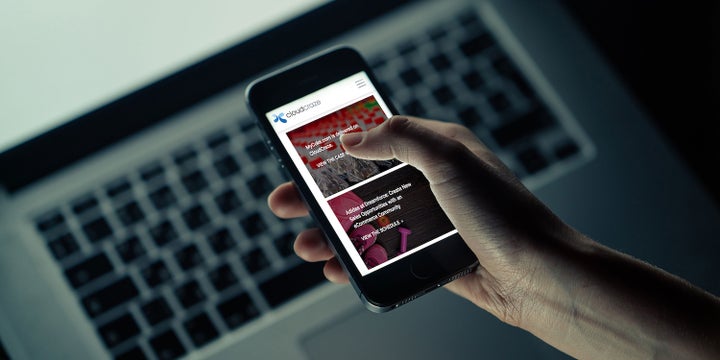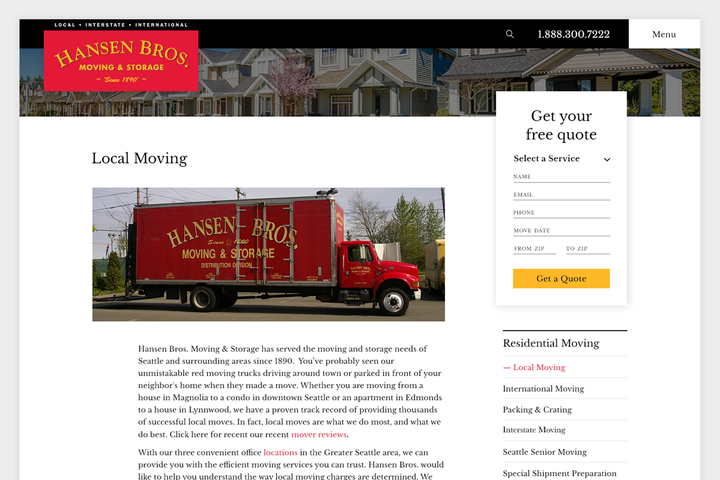
By Matt Brown, Senior Director of Digital Marketing, Walker Sands
5 Key Principles to Bear in Mind
Most of the best UX designs, informed by behavioral science, are so seamless that we barely register them. Leaders in the field use state-of-the-art data mining technology to analyze mountains of data to create better customer experiences down to the smallest details.
For example, Tesla owners walk up to their car and the door handle automatically slides out -- as they pull into their driveways, they are automatically prompted to open the garage door. And while features like this might seem insignificant, they add to the ease and luxury that Tesla owners crave.

And in an even simpler and more ubiquitous example, Netflix automatically queues the next episode to play so that users don’t have to manually click to the next one. We’ve all been there: the accidental Netflix binge, because it’s easier to let episodes roll on than to pause the show and get out of bed.
Many of these brands have mountains of data at their disposal, as well as the resources to hire data scientists that can pull very specific insights to inform UX design. While everyone would have data scientists at their fingertips in an ideal world, this isn’t a reality for many B2B companies who have limited resources and low-volume, high-value sales that don’t generate enough data to attain accurate insights.
That doesn’t mean that B2B brands can’t think about UX, however. You don’t need a degree in psychology to apply some simple tenets of behavioral science that can be helpful for web designers in the B2B space. There are a few principles backed by behavioral science that can help B2B web designers create better experiences for users.
There are five behavioral design principles for B2B that CXOs, UX, and UI designers alike should bear in mind when designing a web interface for the B2B buyer.
#1: Remember the 'Rule of 7.'
For many B2B companies, websites can quickly become over-cluttered with competing priorities. It's important to narrow your focus to just a handful of top goals that are truly within grasp.
In this regard, it's often helpful to leverage a common UX trick based on the famous psychology paper titled The Magical Number 7, Plus or Minus 2. According to George Miller’s original study from Princeton University’s Psychology Department back in 1956, there are limits to the number of objects that the average human can hold in working memory. As applied to marketing, the thinking is that consumers will often become uncomfortable or overwhelmed when presented with more options than that. Best practice: keep the number of options in your navigation menu to fewer than 7, keep the number of elements or images in your page layouts fewer than 7, et cetera. Simplicity is better here, and leads to more conversions.
#2: Make your goal the default choice.
There are dozens of studies illustrating the benefits of giving people the path to least resistance, and playing into humans' tendency to follow the "standard" route.
For example, it's now common knowledge that employee retirement plans with automatic enrollments get significantly higher participation rates (up to 11%). The simplest way to capitalize on this tendency from a web marketer's standpoint is to make your preferred action the default action. As an example, make the opt-in checkbox to receive future marketing communications checked by default, and most visitors will accept it.
But you can go deeper than that. Take Uber's approach of pinging drivers with a tantalizing new fare even before their old fare has been completed. In our case, website visitors generally follow a very similar "assessment journey" with every new website that they visit. Our experience with eye-tracking software indicates that many visitors generally assess the main homepage image first, then check the top left or right areas to analyze the nav menu options, then scroll down quickly, and then decide whether or not to bounce / exit the site. All of this happens in under 6 seconds, so orient your top-converting calls to action (CTAs) accordingly.
#3: If it's familiar, make it surprising; if it's surprising, make it familiar.
Humans are wired to like what’s familiar. For instance, when Spotify curates new music playlists custom for its listeners, the brand always includes a few old favorites with the new recommended songs. The company found that without familiar tunes in the mix, listeners don’t engage as well.

But make it too familiar, and it gets old. That’s why a good design principle is: “if it’s familiar, make it surprising; if it’s surprising, make it familiar.” This holds true in B2B web design.
Web designers have to meet users where they are comfortable, and then introduce new designs and features as they make sense. For example, when the “hamburger” navigation menu encouraged by mobile usage was first popularized (the stack of three horizontal lines at the top corner of your computer screen), it required a learning curve for the vast majority of users.
Designers took care to keep other elements familiar, so that site visitors weren’t turned away by too many features they hadn’t seen before (they wouldn’t combine a new hamburger menu layout with a new way to scroll, for example).
#4: Don't distract from your top CTA.
In design, contrast is king. To lead users to where you want them to be, catch their attention with a contrasting font, size or color. It’s simple, but powerful.

You don’t need to look any further than the apps on your smartphone to see this in action. Ever notice the glaring red dot on the top right of your Instagram home screen that alerts you to a new message? Or the blue “sign-up” button in a field of white on Facebook before you log in?

B2B designers can model off of these same behavioral science-backed tactics. To get customers to download that whitepaper or sign up for that webinar, make the text of the CTA pop. Designers should always have a color in their palette that stands out from the rest, regardless of the brand personality or given project.
#5: You're never fully optimized; iterate accordingly.
"Launch" is becoming an outdated term in the realm of the most sophisticated web marketers. A host of powerful tools have popped up in recent years to help marketers A/B test, analyze, iterate, and optimize (think Google Optimize, HubSpot, Mailchimp, Lucky Orange, Optimizely, and many more).
These tools can help you leverage sophisticated tests for your web and email marketing in order to iterate quickly and automatically, and to select the top-performing headline, image, body copy, et cetera.
When it comes to conversion, design has finally moved outside the realm of the subjective. Now, we can quantitatively assess the best presentation to drive your business goals.
About the Author
Matt Brown is Senior Director of Digital Marketing at Walker Sands, an award-winning public relations and digital marketing agency for business-to-business technology companies. You can follow Matt on Twitter at @mattbrown8454.
